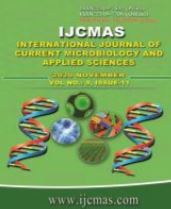


 National Academy of Agricultural Sciences (NAAS)
National Academy of Agricultural Sciences (NAAS)

|
PRINT ISSN : 2319-7692
Online ISSN : 2319-7706 Issues : 12 per year Publisher : Excellent Publishers Email : editorijcmas@gmail.com / submit@ijcmas.com Editor-in-chief: Dr.M.Prakash Index Copernicus ICV 2018: 95.39 NAAS RATING 2020: 5.38 |
The recent advances in agricultural biotechnology and genetic engineering have brought numerous beneï¬Âts to the food and agricultural sector by improving the essential characteristics of plant agronomic traits. Targeted genome editing using sequence specific nucleases (SSNs) provides a general method for inducing targeted deletions, insertions and precise sequence changes in a broad range of organisms and cell types. Genome editing tools, such as siRNA-mediated RNA interference, transcription activator-like effector nucleases (TALENs) and zinc-ï¬Ânger nucleases (ZFNs) for DNA repair has been widely used for commercial purposes. However, the discovery of the CRISPR/Cas9 system as genome editing tool it has revolutionized the broad field of life sciences. Clustered regularly interspaced short palindromic repeats (CRISPR) was discovered for the first time in bacteria and archaea as a virological defensive DNA segment. CRISPR-Cas9 as an advanced molecular biological technique can produce precisely targeted modifications in any crop species. CRISPR/Cas9 owing to its efficiency, specificity and reproducibility, this system was said to be the “breakthrough” in the field of biotechnology. Apart from its application in the field of biotechnology, it is widely used in crop improvement.
 |
 |
 |
 |
 |